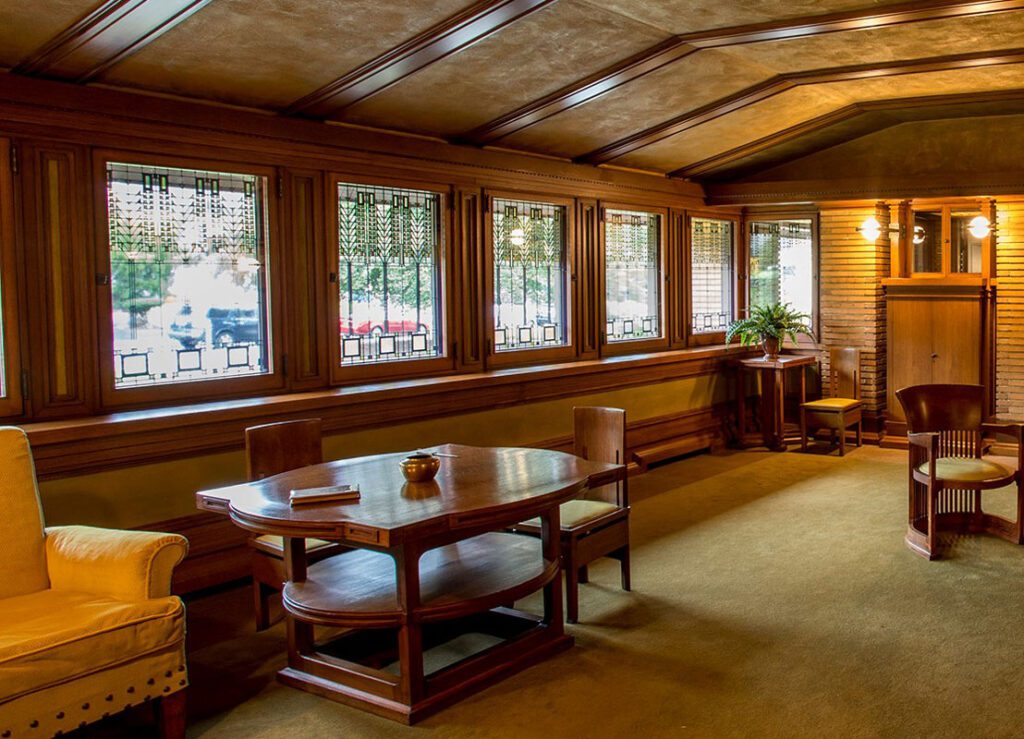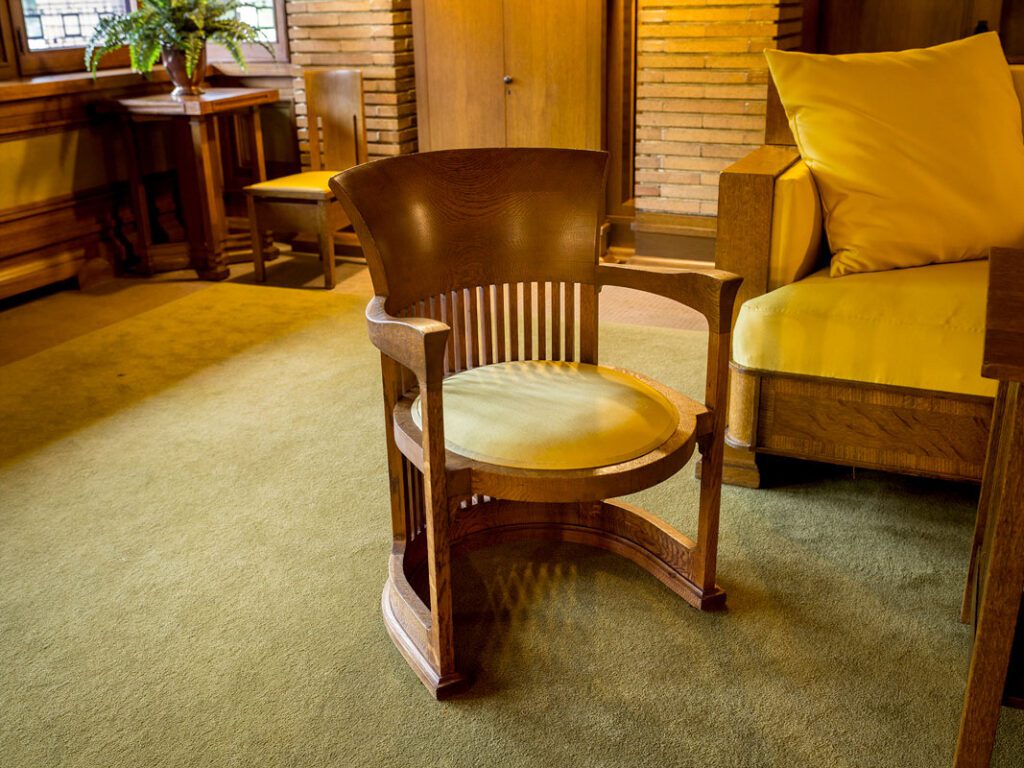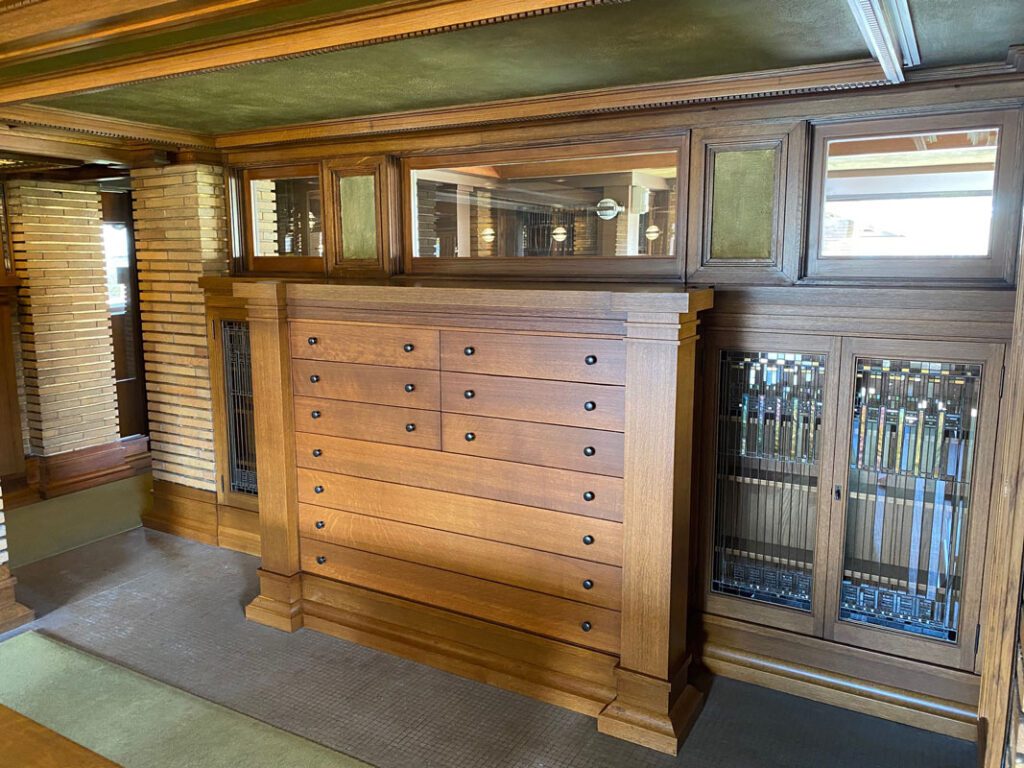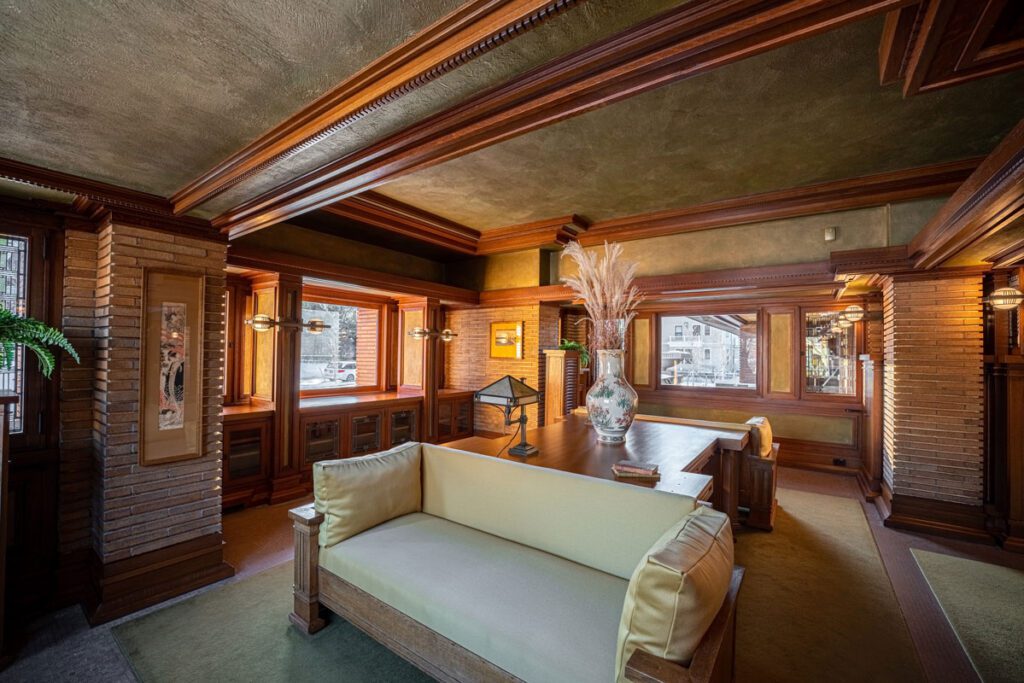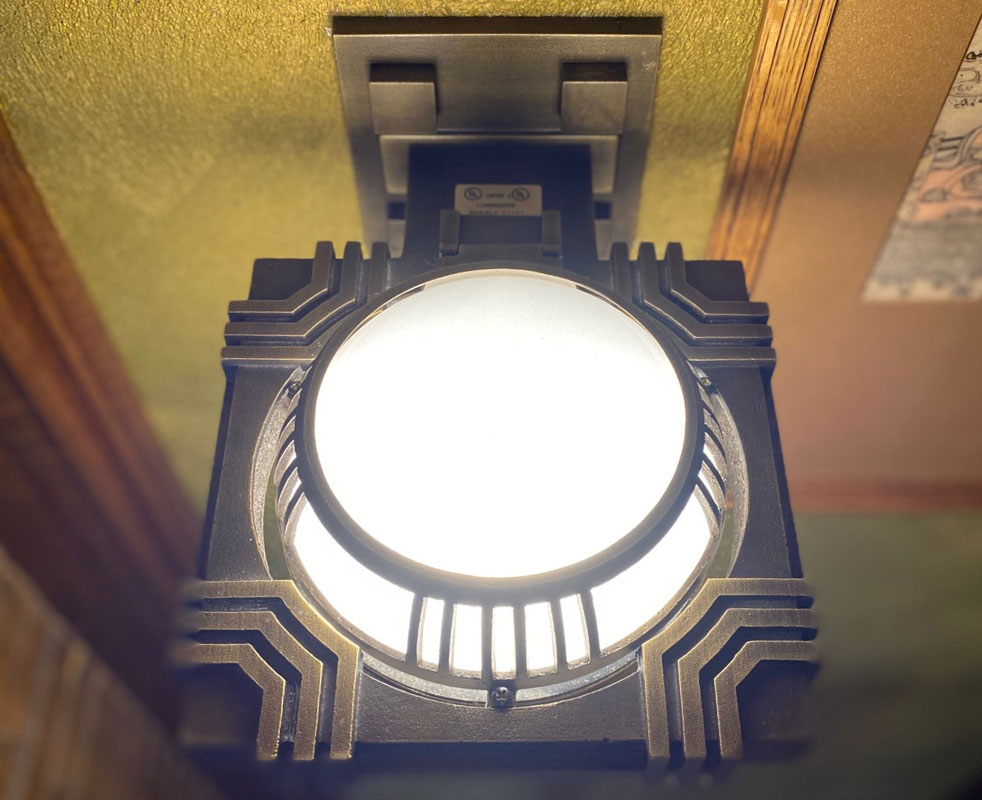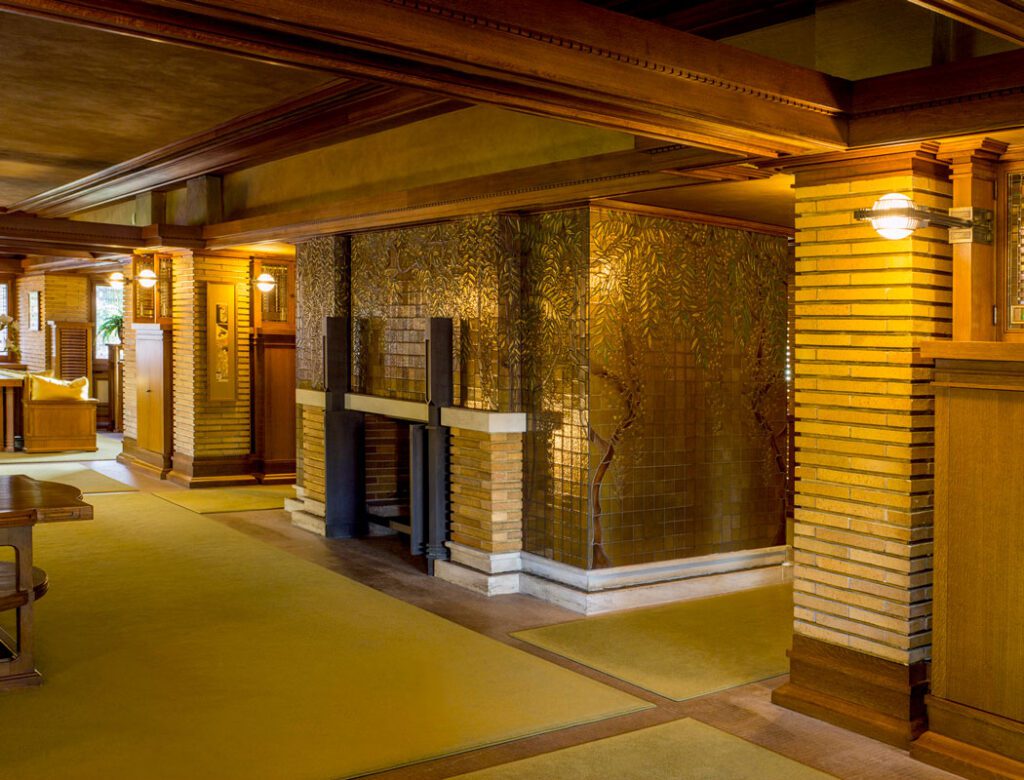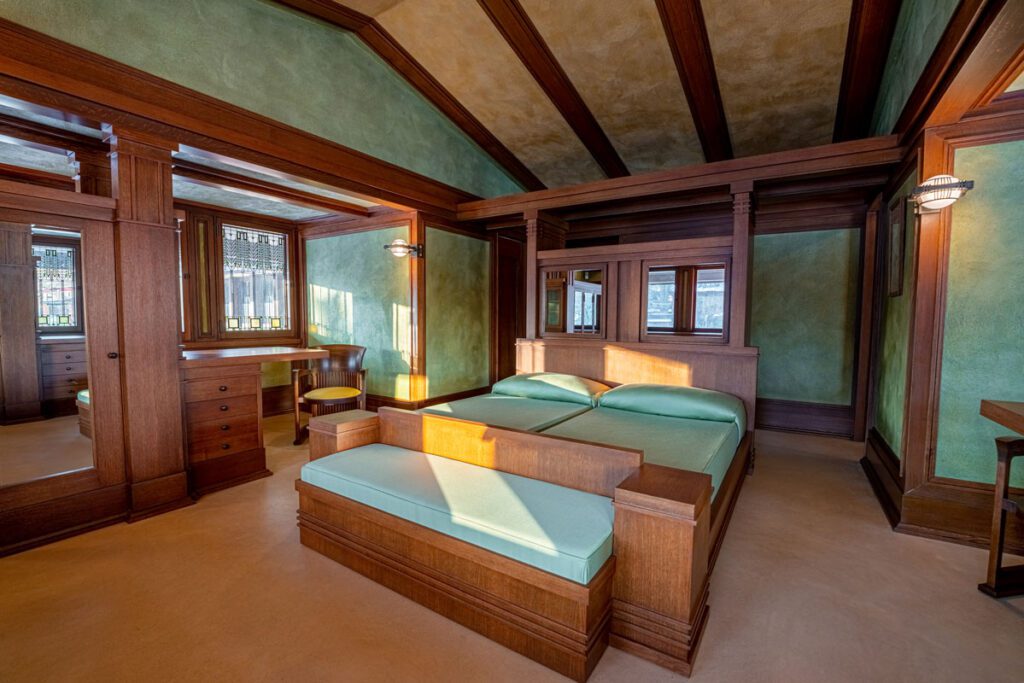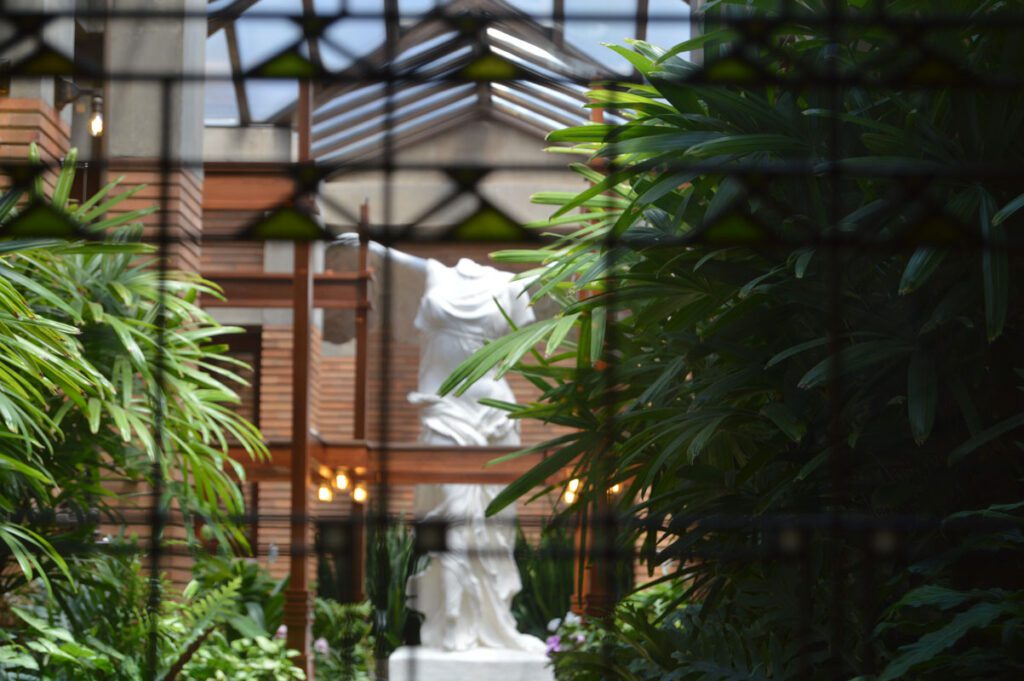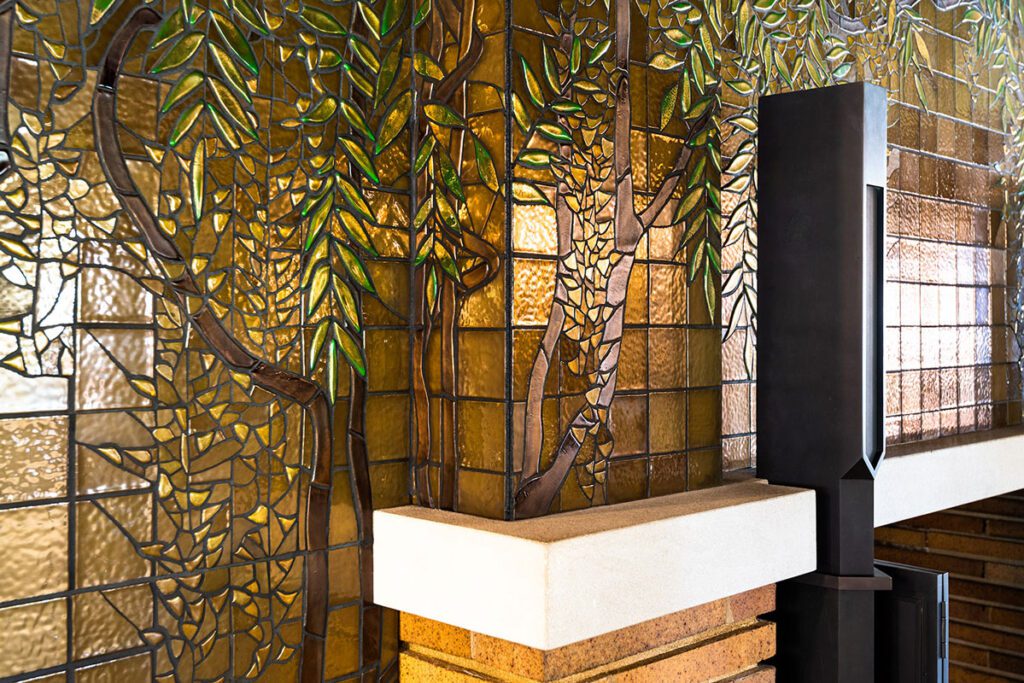Martin House maintains, preserves, and exhibits a fine collection of works of art designed or selected by Frank Lloyd Wright for the Martins, as well as objects related to the family and the history of their home.
A Historic Furnishings Plan was completed in 2008. The Plan provides detailed guidance on maximizing the use of these collections to present as faithfully as possible Frank Lloyd Wright’s vision for Martin House in 1907—the year of significance chosen for the restoration and presentation of the house.
A corresponding Cultural Landscape Report was completed in 2014 to offer direction on the implementation of the historic landscape and the selection of living botanic collections for Martin House gardens and grounds.
Art Glass
An outstanding collection of over 400 pieces of art glass—or “light screens” as Wright liked to call them—in the form of windows, doors, skylights, laylights, and side lights all of which are integral to the overall design of Martin House. Of the sixteen patterns found throughout the estate, the “Tree of Life” is Wright’s best known and most well-loved art glass design. The signature motif graces the Martin House reception room, the central staircase landing, and the entire perimeter of the second floor. A standard “Tree of Life” window is made up of approximately 750 individual pieces of clear, iridescent, and colored glass set in brass came strips.
Furniture
An impressive collection of free-standing furniture to include a variety of tables, chairs, sofas, plant stands, an encyclopedia case, and a series of built-in desks, sideboards, bookcases, and other custom-crafted cabinetry. Most notable are the seven barrel-shaped armchairs, which were first conceived by Wright for Martin House and later adapted for a number of other projects.
Decorative Objects
A vast collection of decorative art objects designed or selected by Wright specifically for Martin House to include two massive bronze firewood boxes, a Steinway grand piano with custom oak veneer, a custom tall case clock, an art glass desk lamp, a selection of Heinz Art Metal vessels and desk sets, a group of Japanese ceramic vases and urns, as well as many examples of prized objects and other household items from the family’s personal belongings.
Prints
A collection of 24 color woodblock prints selected by Wright specifically for the Martins’ residence to include works by Andō Hiroshige, Katsukawa Shunshō, Isoda Koryūsai, Kitagawa Utamaro, Eishō Chōkōsai, and other Japanese artists. Wright first visited Japan in 1905 during construction of Martin House and returned there several times over the subsequent decade.
Architectural Elements
A collection of structural or decorative elements developed as components of the home’s architecture. These include an assortment of Wright-designed ceiling and wall light fixtures, built-in urns and planters, clothesline poles, and four birdhouses. The most striking example is the Wisteria Fireplace Mosaic—an elaborate work of art in glass where the recurring theme of the wisteria vine is represented in thousands of light-reflective glass tiles in a rich palette of bronze, gold, and green.
Sculpture
There are two principal sculptural works located on the grounds of the Martin House: the dramatic figure of The Winged Victory of Samothrace centrally placed within the interior of the conservatory; and the outdoor sculpture of Spring by artist Richard Walter Bock.

